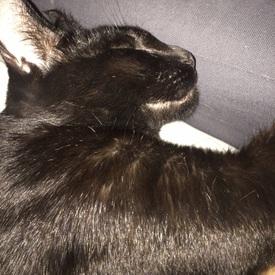Shin Splints

ciarajordan13
Posts: 35 Member
hi! I'm on week 4 of couch to 5k and I've got terrible shin splints. (On the inside part of my leg - anterior I believe?) what can I do to prevent/treat? I've been looking online but I can really only find ads and promotions for different types of kinesio tape or whatever that stuff is called. I don't want to lose my progress, but it's also hard to run when I'm in pain. I usually run on a treadmill about 5.8-6.0 speed, 1 incline.
Thanks!
Thanks!
0
Replies
-
Try icing them.0
-
How old are your shoes? If over 6 months old, you might want to think about replacing them, specifically because of this problem if you're prone to shin splints. I replace mine every 6-8 months. Ice them, rest them. You don't want to create more micro fractures and compound the issue. I saw a friend nearly crippled by her determination to not let shin splints bother her. The bones in her legs looked like spider webs on the x-ray.0
-
Try building toe walks and heel walks into your warmup, it will build muscle around the area and will help prevent them. While you do have them, though, focus on stretching your calves. A great stretch that I use all the time as a dancer and soccer player is I sit on the ground, with my feet in a position as if I were going to plie, and have someone push down on your feet as you push up with as much force as you can. You can do the same sort of thing by pointing your toes and having someone push down while you pull up. Other than that, ice them, twenty minutes on, twenty off, then twenty on again after a workout! Also, make sure you have good arch support in your shoes: that can make all the difference!0
-
Also has a lot to do with your running form and where you land on your foot when it strikes the treadmill. I'm on week 3 of C25K atm, but I used to run 40-50+mpw back in the day. I'm currently also doing it on the treadmill because I now live in a city that isn't very runner-friendly. My "walk" is 3.8mph and my "jog/run" is 6.5-6.8mph at 2% incline.0
-
1. Get rid of the incline, at least for now.
2. Toe walks and heel walks like @thewritingviolinst1 mentioned. By doing these faithfully after every time I ran, I was able to keep running through shin splints (posterior, BTW, same as you. "Anterior" is on the front or outside). However, I did drop to running 2x/week instead of more often.
3. If they're bad enough, you may want to stop running for a little while and do cross-training in the meantime to preserve the aerobic fitness you've built up. The elliptical or arc trainer is my first resort at the gym (love me some outdoor cycling), but if that hurts, you could try spin bike/stationary bike or pool running. The LAST thing you want is for shin splints to build up into a tibial stress fracture!
4. I believe that in my case the heel walks and toe walks along with reduced mileage did 90% of the job, but I also switched to more cushioned shoes (Asics GT-2000 and Skechers GoRun Ride) about the same time. I think that helped, too. (Also please note that while those are both very squishy, the Asics have a significant heel-toe drop and the Skechers are only 4mm. In my case, heel-toe drop was not the issue; for some people, it can be a factor. A smaller drop will place more pressure on your calves and Achilles, so I wouldn't be surprised if it also stressed your tibia more.)0 -
get your gait analyzed and get new shoes.0
-
- Stop running, rest and let them heal. You could potentially prolong your recovery and make your shin splints worse
- Go to a specialist running shop, have your gait analysed
- Change your foot strike; use a mid foot strike instead of a heel strike
- PRICE; Protect, Rest, Ice, Compress and Elevate if needed
0
This discussion has been closed.
Categories
- All Categories
- 1.4M Health, Wellness and Goals
- 398.1K Introduce Yourself
- 44.7K Getting Started
- 261K Health and Weight Loss
- 176.4K Food and Nutrition
- 47.7K Recipes
- 233K Fitness and Exercise
- 462 Sleep, Mindfulness and Overall Wellness
- 6.5K Goal: Maintaining Weight
- 8.7K Goal: Gaining Weight and Body Building
- 153.5K Motivation and Support
- 8.4K Challenges
- 1.4K Debate Club
- 96.5K Chit-Chat
- 2.6K Fun and Games
- 4.8K MyFitnessPal Information
- 18 News and Announcements
- 21 MyFitnessPal Academy
- 1.5K Feature Suggestions and Ideas
- 3.2K MyFitnessPal Tech Support Questions





